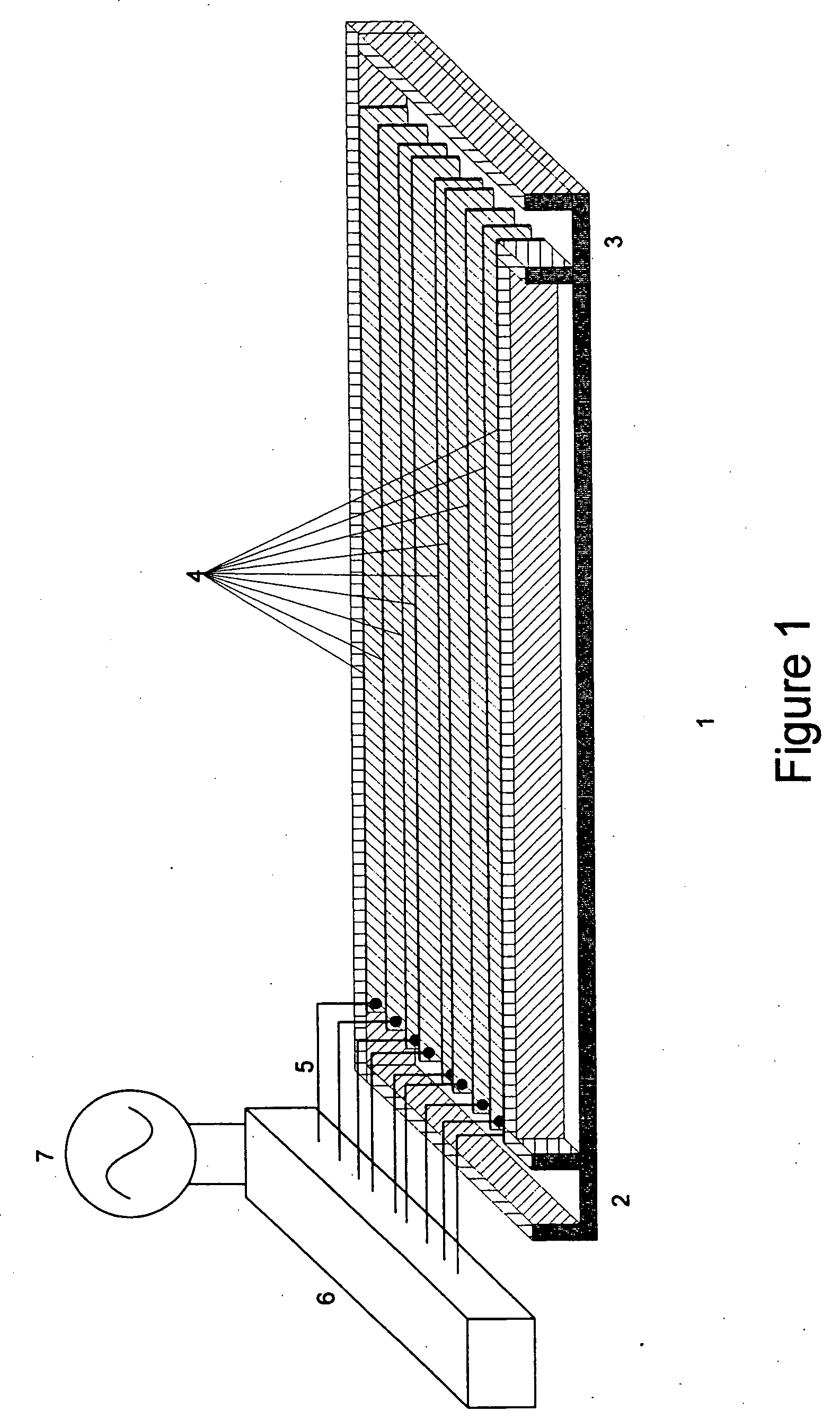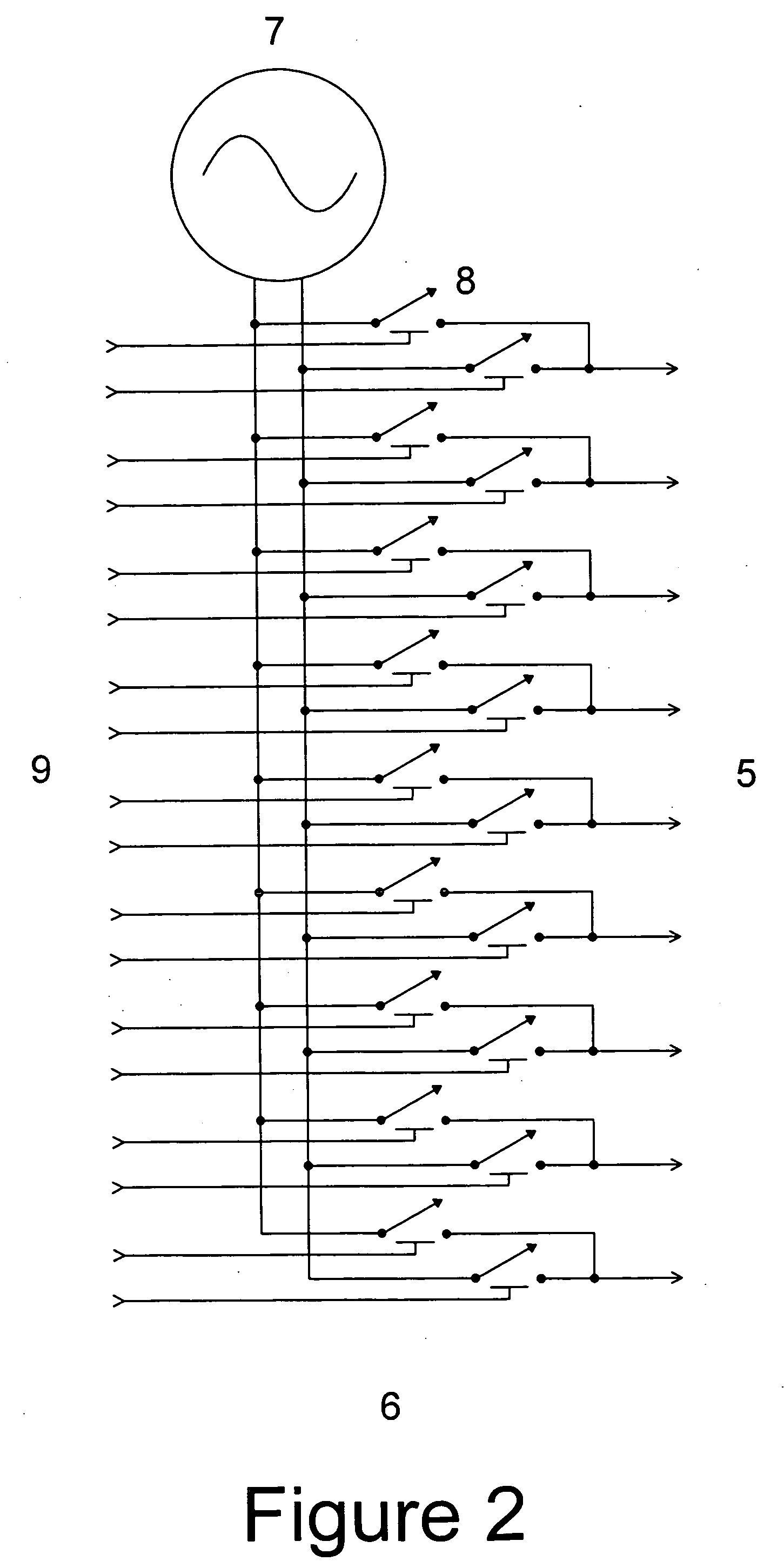Prior art liquid heating devices have attempted to achieve these objectives, but have been only partially able to do so.
Although the use of electrical heating elements is well known and widely practiced, in tankless liquid heating devices, they suffer from considerable disadvantages.
One of the most important of these is the occurrence of “dry firing”, i.e., operation of the
heating element when it is not completely immersed in the liquid, or when excessive deposits are formed along the surface of the
heating element, thus enabling operation of the
heating element outside of its safe temperature range and introducing the possibility of shortened
life span, element failure,
system meltdown, or even fire.
Additional functional and costly components are required to address this.
However, when the heating element is covered with deposits that are relatively thermally non-conducting, the
thermostat is not thermally connected to the heating element and thus the
thermostat does nothing to prevent overheating of the
electric heating element.
However, these are only effective in one mounting orientation of the heater.
However, a flow-sensing switch is generally expensive and not reliable.
Besides, as described, it is subject to binding and getting stuck in one position, including possibly a position that indicates the existence of
water flow when there is none.
This solution is expensive, unreliable, and suffers the same problems as '896.
These are inoperative when there is not a high
thermal conductivity thermal path between heaters and the switches, such as when the heater is without water.
This creates the problem of how to manage the
latent heat (the heat which has not yet escaped) of the elements when the liquid flow rate is abruptly reduced to near zero or zero.
However, doing so increases the temperature of the surrounding liquid, possibly to an undesirable extent.
However, these larger heating chambers make it difficult to respond to demand changes, especially when the
water flow rate starts from zero.
Unfortunately, the best
semiconductor devices for controlling current to electrically powered water heaters are essentially switches (they can be opened and closed, but they don't provide a means for regulating current), thus making this a significant problem.
However, this only reduces the magnitude of the potential
power supply voltage variations by a factor of the number of heating elements, in the case of his example, four.
These lead to a relatively high level of design complexity and a correspondingly high manufacturing cost.
One of the disadvantages of the DER method, however, is that the amount of
electrical current drawn by the liquid between the electrodes, and therefore the amount of heat delivered to the liquid, is determined by the electrical
conductivity of the liquid, a parameter that can vary quite widely, for example 10 to 1.
It is evident that accommodating such wide range of liquid conductivities by any of these methods is quite difficult.
This was apparently driven by the need to accommodate the
large range of water conductivities and the inadequacy of the other previously mentioned methods.
However, no disclosure of the range of adjustability of the device is disclosed.
Furthermore, the mechanical adjustment involves the translation of motion across a liquid to
air barrier, something that is difficult to achieve reliably and at low cost.
This allows for unheated liquid to leave the heater at low flow rates (unlike conventional tank type heaters), and it tends to generate a
delay between the time liquid flow is demanded and the time fully heated liquid is finally delivered thus creating a wastage of liquid.
This, together with the presence of orientation limitations, unreliable functioning and cost must be overcome in a tankless liquid heating device that meets the objectives cited above.
 Login to View More
Login to View More  Login to View More
Login to View More 


